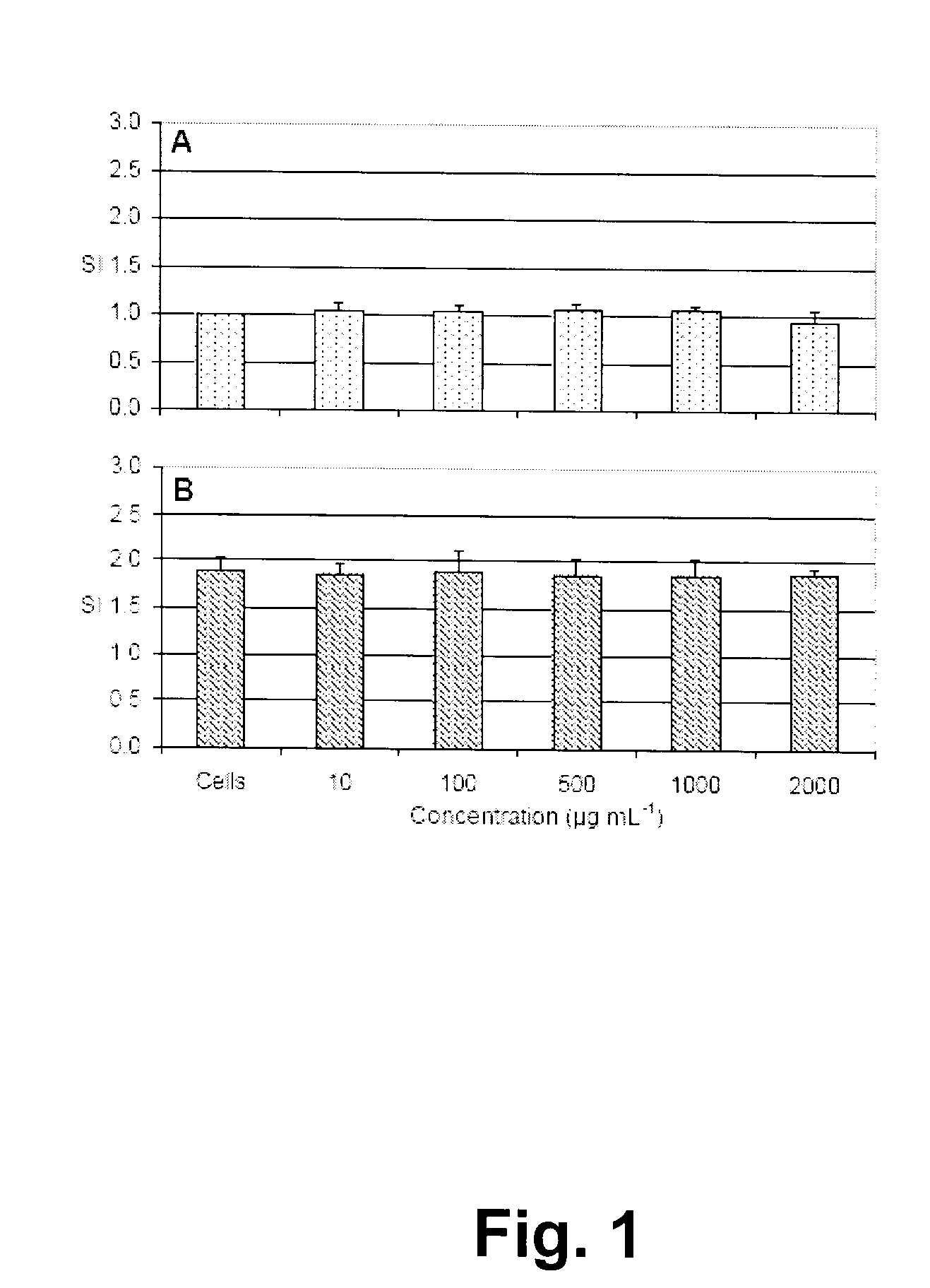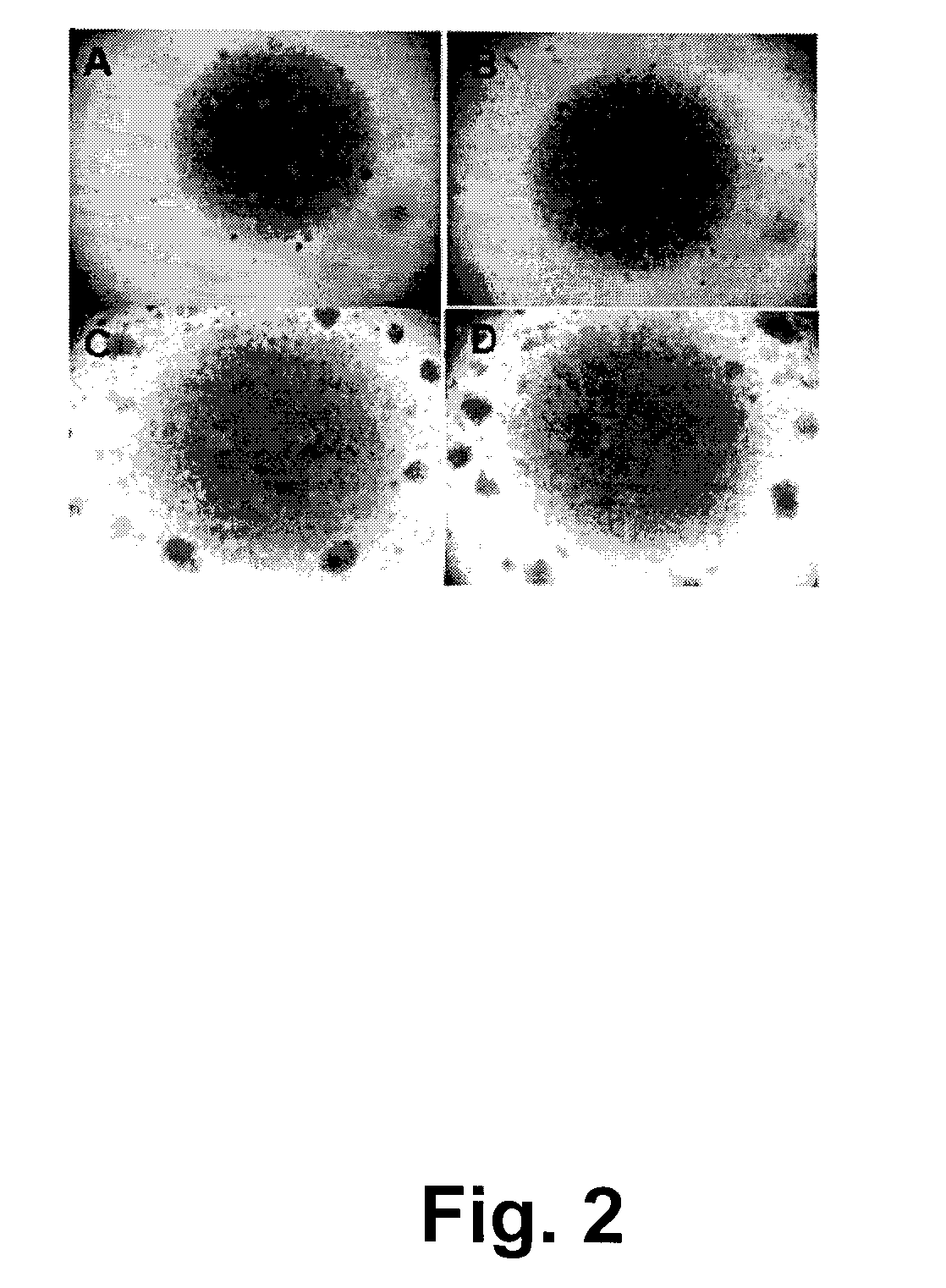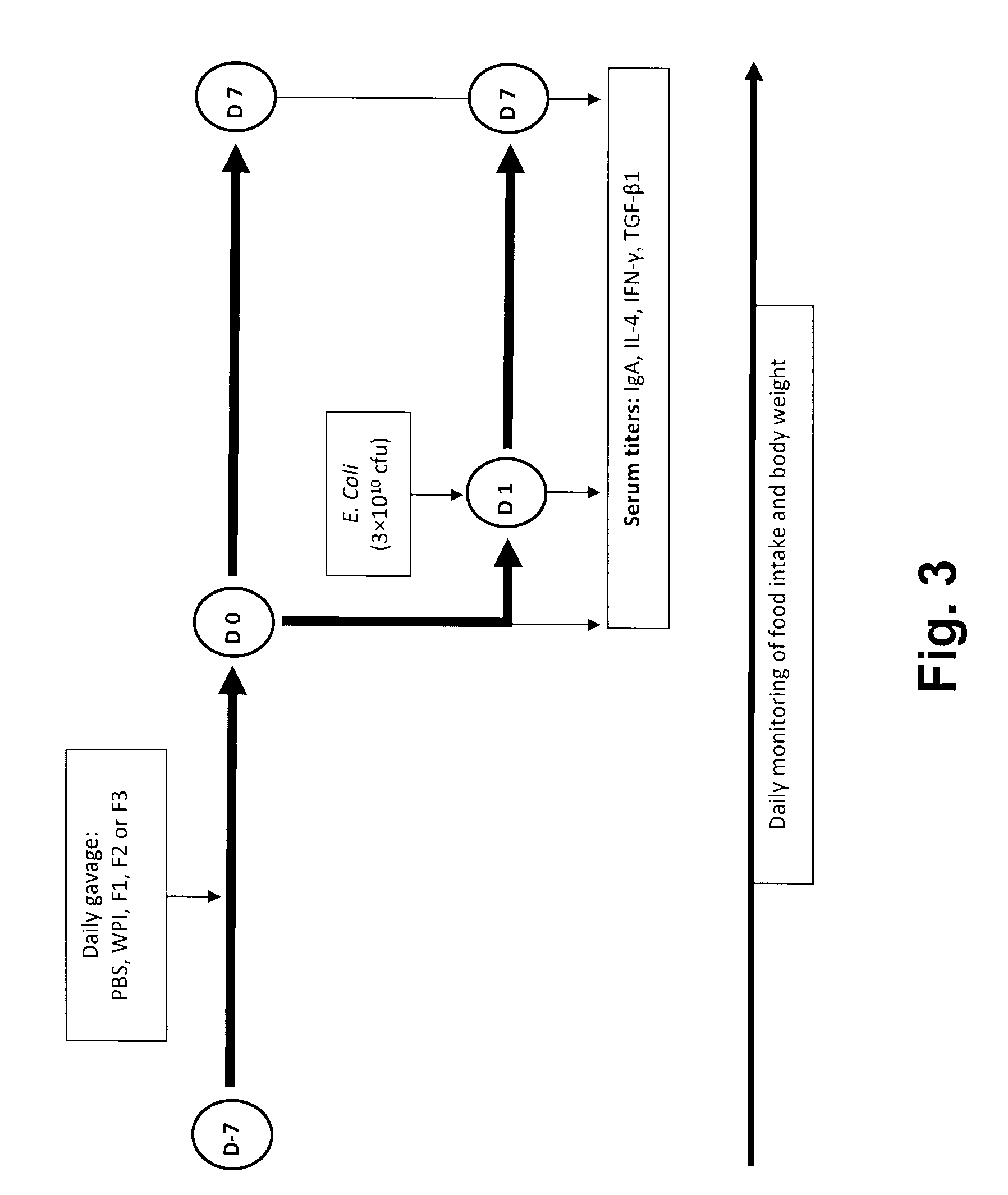Immunomodulatory dairy peptides and uses thereof
- Summary
- Abstract
- Description
- Claims
- Application Information
AI Technical Summary
Benefits of technology
Problems solved by technology
Method used
Image
Examples
example i
Immunomodulating Effects of Peptides from β-Lactoglobulin and α-Lactalbumin on Murine Splenocytes
[0049]The present study focused at investigating the effect of some peptides from β-Lg and α-La on proliferation of resting- and ConA-stimulated murine splenocytes. The peptides were chemically synthesized and selected according to their physicochemical characteristics (amino acid composition, molecular weight, hydrophobicity and charge) and their theoretical release from native whey proteins by trypsin and / or chymotrypsin hydrolysis in order to simulate the intestinal digestion. The peptides showing different cell stimulating profiles were also selected to evaluate their effects on the secretion of interleukin (IL)-2, IL-4, IL-10 and interferon-gamma (IFN-γ).
[0050]Peptides. Peptides were chemically synthesized by the Eastern Quebec Peptide Synthesis Facility (Sainte-Foy, QC, Canada) using a peptide synthesizer Applied Biosystems (Model 433A, Foster City, Calif., USA). All the peptides h...
example 11
Effect of Whey Peptidic Fractions Feeding on Immune Parameters in a Non-Infected and an Infected Murine Model
[0067]The first objective of the present study was to assess the immunomodulating effects of the whey protein isolate and the whey peptide fractions given orally to mice. The second goal was to evaluate the potential of these products on a murine model of enterohemorrhagic Escherichia coli O157:H7 infection.
[0068]Whey protein source and whey peptidic fractions preparation. Commercial microfiltered whey protein isolate (WPI) was kindly provided by Immunotech (Vaudeuil-Dorion, QC, Canada). The peptide fractions were prepared by hydrolyzing the WPI fraction using a mixture of trypsin:chymotrypsin (1:1), and stopping the reaction by ultrafiltration when the degree of hydrolysis reached 10%. The resulting hydrolysate was subsequently fractionated by liquid-phase isoelectric focusing a preparative Rotofor cell (Bio-Rad Laboratories, Hercules, Calif., USA). When voltage and current ...
example iii
Identification of Immunomodulating Peptides Resulting from the Enzymatic Hydrolysis of Whey Proteins
[0091]Our previous work showed that a whey protein isolate (WPI), its enzymatic digest and peptide fractions separated from the hydrolysate had an impact on murine splenocyte proliferation in vitro. In addition, the peptide fractions oriented the cytokine secretion towards a Th1 profile, especially the peptide fractions with acidic or neutral pI. The immunomodulating properties of the WPI and the peptide fractions were further investigated in vivo: the whey products were given orally to mice in a healthy and infected model, and serum immunoglobulin and cytokine levels were assessed. In healthy mice, all whey products strongly stimulated serum IgA production, which could indicate a state of heightened immunological vigilance, whereas in the infected mice only the basic peptide fraction seemed to influence the measured immune parameters. The objective of the present study is to identify...
PUM
| Property | Measurement | Unit |
|---|---|---|
| Volume | aaaaa | aaaaa |
| Volume | aaaaa | aaaaa |
| Volume | aaaaa | aaaaa |
Abstract
Description
Claims
Application Information
 Login to View More
Login to View More - R&D
- Intellectual Property
- Life Sciences
- Materials
- Tech Scout
- Unparalleled Data Quality
- Higher Quality Content
- 60% Fewer Hallucinations
Browse by: Latest US Patents, China's latest patents, Technical Efficacy Thesaurus, Application Domain, Technology Topic, Popular Technical Reports.
© 2025 PatSnap. All rights reserved.Legal|Privacy policy|Modern Slavery Act Transparency Statement|Sitemap|About US| Contact US: help@patsnap.com



